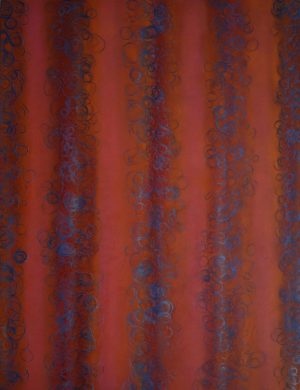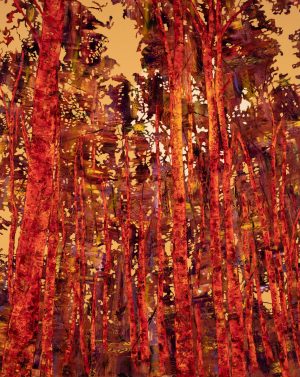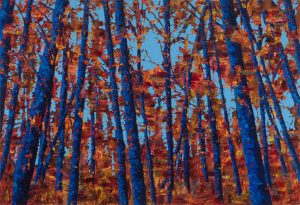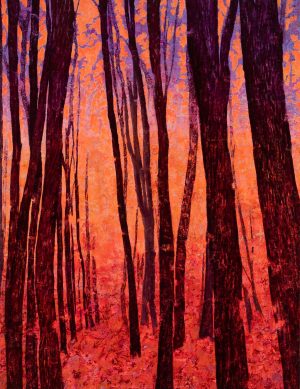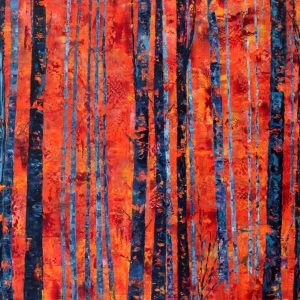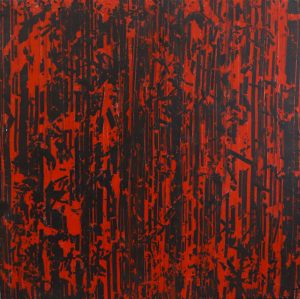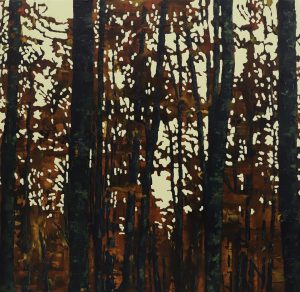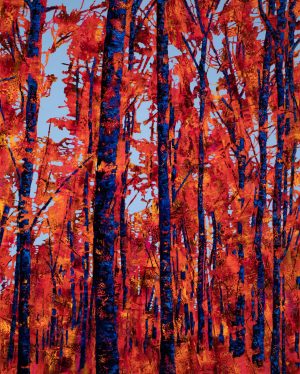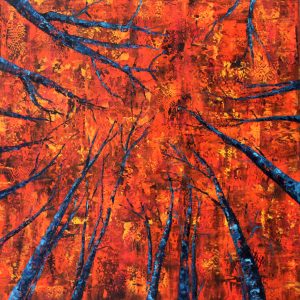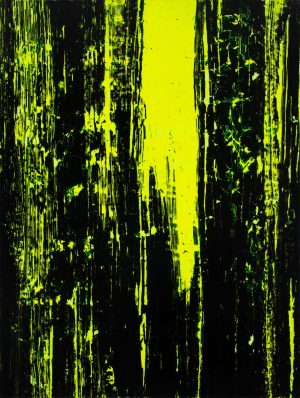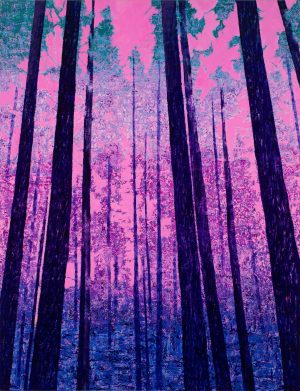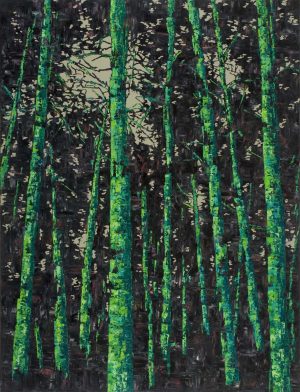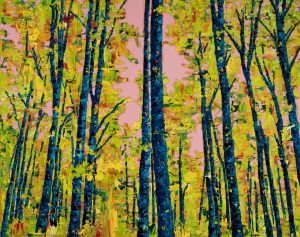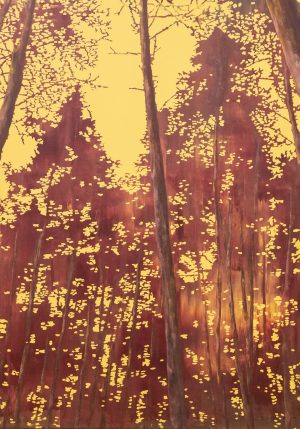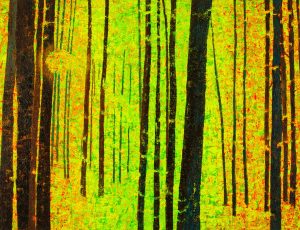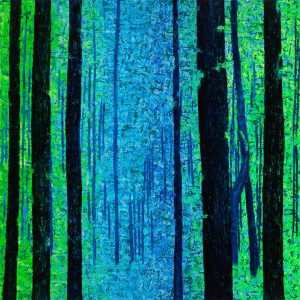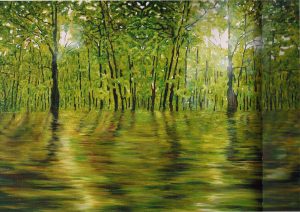
Szilárd CSEKE
Flood
- Year(s)
- 2007
- Technique
- oil and lacquer on canvas
- Size
- 100x150 cm
Artist's introduction
Szilárd Cseke is one of the well-known artists of the generation who entered the scene in the 1990s, becoming known at home and internationally for his decorative, bright forest paintings and kinetic installations. Emese Révész analysed his painterly vision as a typical attitude of the 2000s: 'Cseke's painterly attitude is also a generational creed, the basic idea of which is the rehabilitation of painterly beauty, the defiant embrace of "pleasure painting". Returning to the old role of the painter, he is an illusionist who creates experiences, and his painting is both an object of relaxation and meditation." Szilárd Cseke, born in Pápa, studied at the Faculty of Fine Arts of the University of Pécs and then at the Hungarian College of Fine Arts during the regime change. He first constructed mobile works of art from plastic, car tyres and fans, then painted monochrome still-lifes and storyboard-like scenes with soft, ephemeral brushwork. He found his distinctive stylistic world in the early 2000s as a prominent representative of the new mainstream of digital image-based painting emerging at the turn of the millennium. His decorative period, which began in 2002, with its serene mood, analysed the romantic, symbolic duality of forest trees and sky in a post-digital optical experience. He broke down the photo-based landscape into layers and then built up the image space step by step, creating a varied facture. In places, he scraped back or sanded back the smeared, painted, dripped-dotted oil, acrylic, enamel and lacquer paint. The rich surfaces of different properties and craft pushed the conceptual boundaries of digital image-making and traditional fine art. As art historian Sándor Hornyik said: "From a distance, the painting as a whole gives the impression of a digialtised photograph, but up close, the complexity of the 'ground' is revealed; the green patches do not break down into pixels but are organised into subtle brushstrokes (...) What is exciting about the end result is that it is both painterly and hyper-modern. The generic subject becomes secondary, but the technical complexity works brilliantly." After the emblematic forest paintings, Cseke returned to compositions following life and then built kinetic, conceptual installations with motors – analysing social relations. His largest installation ensemble, Sustainable Identities, was presented at the Hungarian pavilion of the Venice Biennale in 2015. Constantly experimenting with new techniques, around 2020, Cseke revisited forest paintings, reverting to nature, in bright visionary colours, in response to the urban lifestyle changed by the pandemic. Cseke lives and works in Budapest. Gábor Rieder
More artworks in the artist's collection »


